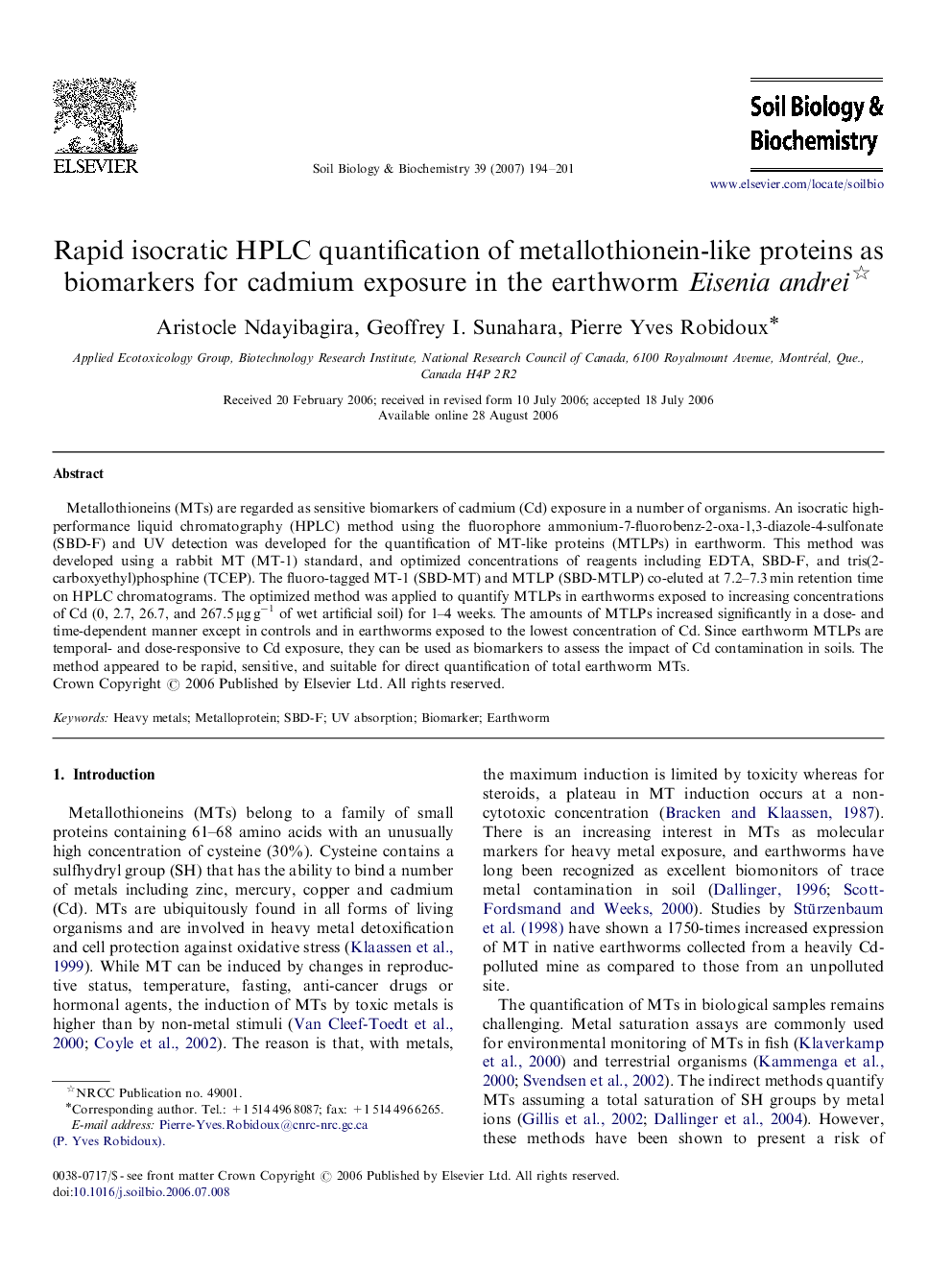| Article ID | Journal | Published Year | Pages | File Type |
|---|---|---|---|---|
| 2025879 | Soil Biology and Biochemistry | 2007 | 8 Pages |
Metallothioneins (MTs) are regarded as sensitive biomarkers of cadmium (Cd) exposure in a number of organisms. An isocratic high-performance liquid chromatography (HPLC) method using the fluorophore ammonium-7-fluorobenz-2-oxa-1,3-diazole-4-sulfonate (SBD-F) and UV detection was developed for the quantification of MT-like proteins (MTLPs) in earthworm. This method was developed using a rabbit MT (MT-1) standard, and optimized concentrations of reagents including EDTA, SBD-F, and tris(2-carboxyethyl)phosphine (TCEP). The fluoro-tagged MT-1 (SBD-MT) and MTLP (SBD-MTLP) co-eluted at 7.2–7.3 min retention time on HPLC chromatograms. The optimized method was applied to quantify MTLPs in earthworms exposed to increasing concentrations of Cd (0, 2.7, 26.7, and 267.5 μg g−1 of wet artificial soil) for 1–4 weeks. The amounts of MTLPs increased significantly in a dose- and time-dependent manner except in controls and in earthworms exposed to the lowest concentration of Cd. Since earthworm MTLPs are temporal- and dose-responsive to Cd exposure, they can be used as biomarkers to assess the impact of Cd contamination in soils. The method appeared to be rapid, sensitive, and suitable for direct quantification of total earthworm MTs.
